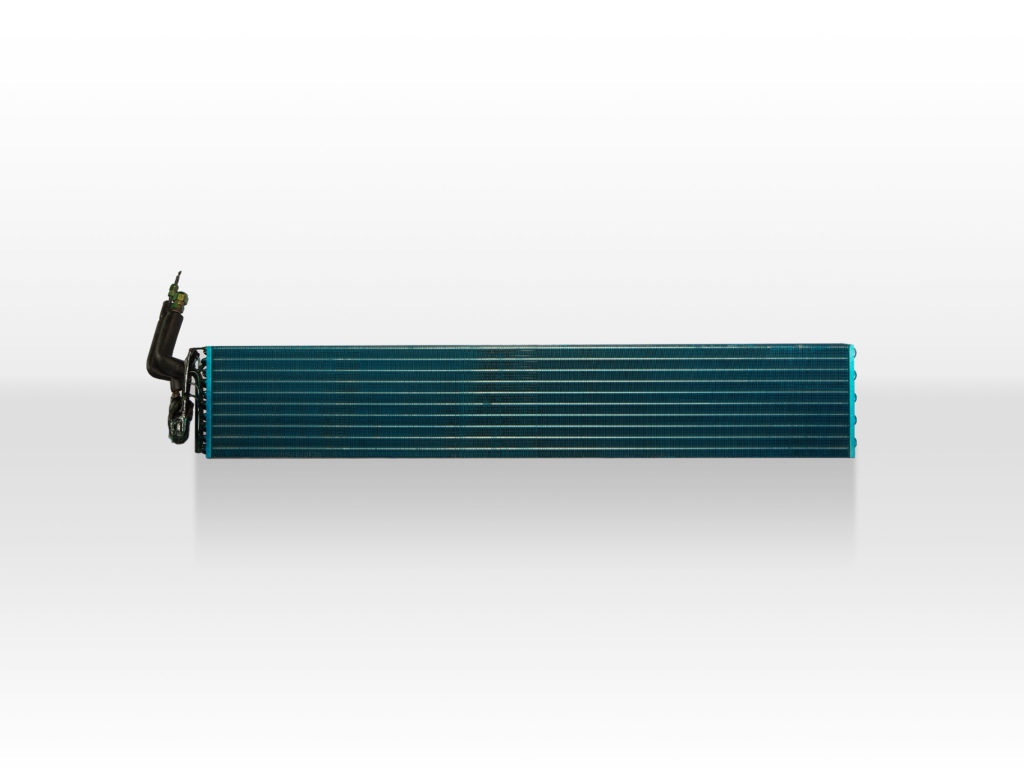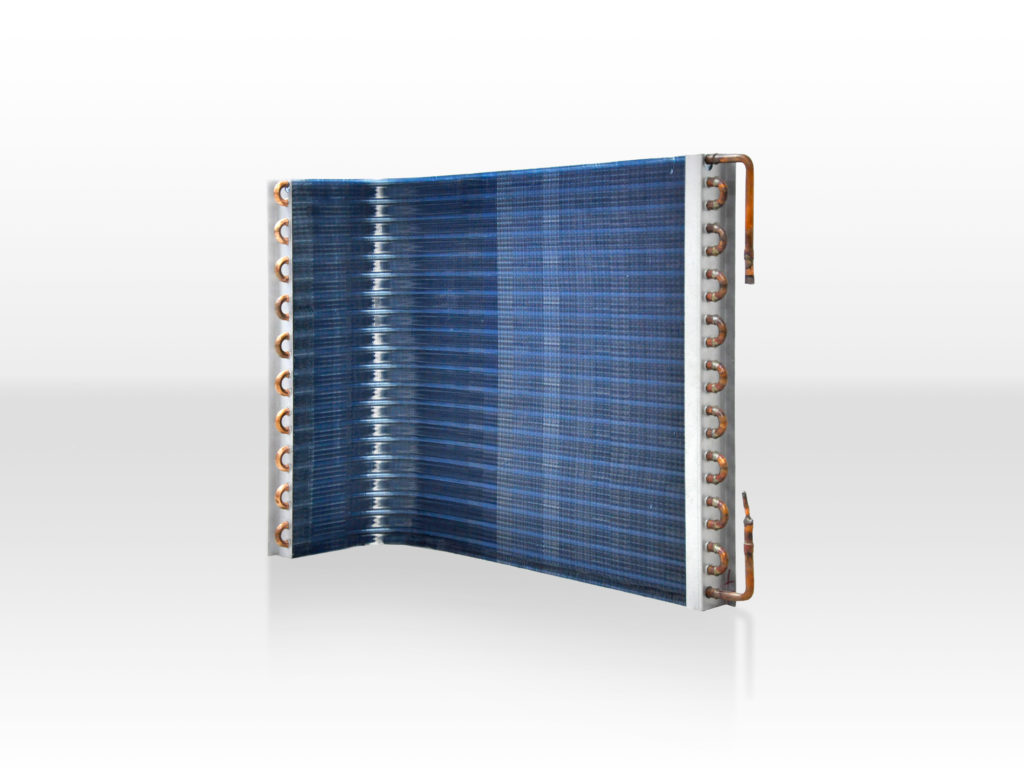The full for HVAC/R
D-COAT ™ is the special coating that can reduce water residuals and stop oxidation which is the main reason why coils corrode. D-COAT™ has antimicrobial additives that can prevent the growth of bacteria and fungi.
D-COAT ™ treatments are designed for use on commercial air conditioning coils, refrigeration, industrial coils, transport and other air conditioning equipment: coils, fins, tubes and all internal metal surfaces.
We offers three types of Coating:
D-COAT ™ –our standard coating excels in protection against corrosive environments, thus, extending the life of the equipment and helping to maintain good airflow efficiencies.
D-COAT UV ™ –our specialized UV protection coating for outdoor units to preserve the performance and longevity of the coils.
Super hydrophilic coating
- Creating dry surface which increases efficiency of HVAC
- Greatly reduce dirt and dust collection
- Less maintenance
- Protection against corrosion
- Reduce mold and bacteria with Ag+ technology (Silver Ion)
- Safe from biofilm
- So thin that there is no effect on air flow or efficiency
Certificate
- ASTM B117: 5000 Hrs Salt Spray Test
- ASTM G21: Resistance to Fungi
- ASTM D-5894 : UV Exposed 2,000 Hrs
- Indirect Food Contact Notification from FDA
- ASTM G22: Resistance to Bacteria
What Causes Corrosion?
Simple copper and aluminum heat exchangers achieve excellent heat exchange properties but they are dissimilar metals and will corrode at the point where copper meets aluminium. This corrosion is called ‘galvanic corrosion’ which can be rapid and pre-coated fins do not eliminate this risk. Substantial efficiency losses will occur.
D-COAT ™ provide a super- thin 6-9 micron layer to prevent this from happening. This stops the corrosion and doubles (or more) the life of the coil
Fin Protection
When applied to new coils the fin protection is excellent and can double the life of ant heat exchangers. Protection from extreme pollutants is assured using D-COAT ™ coatings.
Heat exchangers are crucial for the creation of comfortable living environments. It has been well documented that heat exchange makes up to 60% of buildings energy consumption. Inefficient poorly maintained heat exchangers can add thousands of dollars to a buildings monthly electricity bill.
The two main issues affecting the efficiency of heat exchangers are:
- Corrosion due the environment such as salt and pollution
- Fouling of the heat exchange unit with contamination such as dirt and biofilm
The benefits of D-COAT ™ coatings:
For Condensers
- Surfaces remain free from surface corrosion retaining heat exchange capacity
- The coating is smooth and resists build up of dirt and oil from pollution
- The surface remains dry and resists chemical attack from salt, sulphur and other environmental chemicals
For Evaporators
- Condensate water faster and reduce water retention increasing the heat exchange capacity and increasing airflow
- The super hydrophobic surface is self cleaning
- Surface remain free of biofilm and mold due to the built in antimicrobial activity of the coating.
Chemical Resistance
Offers protection to a majority of aggressive environments with the exception of strong alkalis and oxidizing chemicals. The following is the chemicals and solvent resistance guide of chemical exposure:
Corrosive Agent Strength Rating
| Hydrochloric Acid 5% | E |
| Hydrochloric Acid 10% | E |
| Hydrochloric Acid 20% | E |
| Hydrochloric Acid 30% | E |
| Sulphuric Acid 5% | E |
| Sulphuric Acid 10% | E |
| Sulphuric Acid 20% | E |
| Sulphuric Acid 30% | E |
| Phosphoric Acid 5% | E |
| Phosphoric Acid 10% | E |
| Phosphoric Acid 20% | E |
| Phosphoric Acid 30% | E |
| Phosphoric Acid 50% | E |
| Acetic Acid 10% | E |
| Sodium Hydroxide 10% | G |
| Trichloroethylene | E |
| Toluene | G |
| Methylated Spirits | G |
| Mineral Turps | G |
| MEK | G |
| Acetone | G |
E = Excellent
G = Good
P = Poor
In addition the above D-COAT ™ demonstrates excellent resistance to fumes from the following: Lactic Acid, Oxalic Acid, Humic Acid and Saltwater.
Download
Coating Process: Spraying or dipping (Special Cases)
Composition: Water-based
Color: D-COAT™ Light blue / D-COAT™ Grey
Super Hydrophobic: Additives to increase condensation and improve corrosion resistance
Gloss Level: Full
Chemical Resistance: Excellent (with the exception of strong alkalis or oxidizing chemicals) see chemical resistance for more information
Solvent Resistance: Depends on a selection of solvent
Temperature Range: Up to 120℃
Fin pattern: Standard and also suitable for enhanced fin designs
Fin type: Aluminum, Copper
Film thickness: 6-20 microns d.f.t. (dry film thickness) per spray coat 6-20 microns d.f.t. (dry film thickness) per dipping coat
Heat transfer: Insignificant impairment at the given thickness
Certification
- ASTM B117: +10,000Hrs Modified Salt Spray Test
- ASTM G85: 2,000Hrs Modified Salt Spray Test
- ASTM D5222: Flexibility Test
- ASTM G21: Resistance to Fungi
- ASTM G22: Resistance to Bacteria
- ASTM G87: Moist SO2 Test
- MIL-STD-810: Sand and Dust Test
The antimicrobial additive used in the D-COAT™ Product has:
- Food contact notification received from the US FDA
- EPA FIFRA Registration
- EPA Food contact use
- EPA Drinking water contact use
- EPA Heat, Ventilation and Air Condition (HVAC) use
- NSF Certification Standard 51 Food Equipment Material




